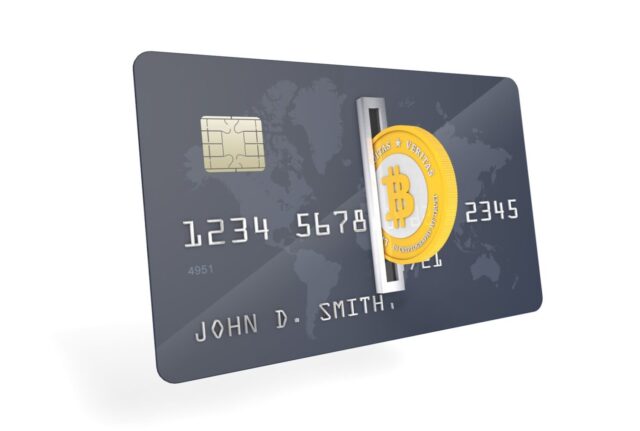
In the burgeoning realm of digital money, we often hear terms that sound alien to traditional finance enthusiasts. From wallets to transactions, the landscape of cryptocurrency operates on intricate mechanisms, far removed from your average bank account or credit card. Let’s plunge into this world, breaking down its complex systems into easily digestible snippets.
Types of Cryptocurrency Wallets

Cryptocurrencies hinge upon virtual containers called wallets. These aren’t your conventional leather billfolds, but digital tools that store your virtual assets. Fundamentally, there are two main categories: hardware and software wallets. Hardware wallets, often dubbed ‘cold storage’, are physical devices safeguarding private keys. They offer robust security since they remain disconnected from the internet. On the flip side, software wallets, or ‘hot storage’, live on connected devices, be it a smartphone, computer, or online platform. PassimPay is a payment service that has it all and could be exactly what you need.
Diving deeper, software wallets further bifurcate into desktop, mobile, web, and even paper wallets. While desktop variants reside on PCs, offering individual control, mobile ones facilitate on-the-go access. Web wallets, managed by third-party servers, ensure cloud access but come with inherent risks of server breaches. Interestingly, paper wallets are simply printouts of your public and private keys, serving as a rudimentary, yet effective form of cold storage.
Security Measures for Cryptocurrency Wallets

The realm of digital assets demands rigorous protection. Think of these wallets as your vault. It’s imperative to fortify them. Hardware wallets naturally lead the security race. Being offline, they’re immune to hacks, malware, or phishing attempts common to internet-bound platforms. Regularly updating firmware also enhances their defensive stature.
Software wallets, while convenient, necessitate vigilance. Utilizing strong, unique passcodes, enabling two-factor authentication, and routinely backing up your wallet are some preventive maneuvers. Remember, with great digital power comes immense security responsibility. Safeguarding your treasures from digital pirates requires a proactive stance.
The Role of Public and Private Keys
To understand cryptocurrency’s functioning, imagine a complex locker system. Public keys resemble locker numbers — visible to all, yet only the locker owner can access its contents. The access tool? The private key. While public keys allow others to send you digital funds, private keys are secret passcodes, enabling fund access and transfer.
In essence, public keys are akin to your email address — sharable, with minimal risk. Conversely, private keys resemble your email password, warranting utmost confidentiality. Lose your private key, and your funds remain forever locked away. Hence, storing them securely, preferably offline, becomes paramount.
Cryptocurrency Transactions: A Basic Overview

Transacting in cryptocurrencies breaks from traditional monetary exchanges. Initiating a transaction involves specifying an amount and the recipient’s public key. The sender then signs off this transaction with their private key, signaling their approval. This digitally signed package is broadcasted to the cryptocurrency’s network, awaiting validation.
Once validated, the transaction enters a pool with others, poised to be added to the blockchain. This chain, a digital ledger, stores every transaction, ensuring transparency and immutability. Unlike bank transactions, which can be reversed, cryptocurrency dealings are irreversible, lending a unique blend of security and permanence.
How Transactions Are Verified in Cryptocurrencies
Validation stands as the heart of cryptocurrency transactions. Miners, and network participants, invest computational power to solve complex cryptographic puzzles. Solving them approves the transaction, embedding it into the blockchain. In return, these miners earn rewards, often in the form of new cryptocurrency units, incentivizing this process.
But, it’s not just about computational prowess. A consensus mechanism, adopted by the majority, ensures that only legitimate transactions get approved. Popularly, Proof of Work (PoW) and Proof of Stake (PoS) serve as primary consensus models, each with its unique advantages and challenges.
Blockchain Technology and Transaction Validation

Blockchain, the underpinning tech of cryptocurrencies, revolutionizes data storage. This digital ledger, comprising data blocks linked chronologically, guarantees data immutability. Once information embeds into the blockchain, altering it requires network consensus, making tampering nearly impossible.
Apart from data security, blockchain offers transparency. Each transaction is visible to every network participant, fostering trust. With its decentralized nature, blockchain eliminates intermediaries, slashing costs and enhancing speed. As industries discern its potential beyond cryptocurrencies, we observe its adoption in healthcare, finance, supply chains, and more.
Transaction Fees in Cryptocurrency Payments
Cryptocurrency dealings aren’t free. Transaction fees, though minuscule compared to traditional banking or credit card charges exist. These fees remunerate miners or validators, compensating them for their computational contribution. Factors like transaction size, network congestion, and urgency dictate these charges.
Interestingly, users often hold the flexibility to set their fees. Elevate the fee, and your transaction likely processes faster, enticing miners with a higher reward. Conversely, a lower fee might mean longer processing times, especially during peak network activity. Thus, a delicate balance between urgency and cost emerges.
Exploring Payment Gateways for Cryptocurrencies

As digital currencies gain traction, the need for efficient payment gateways intensifies. These gateways facilitate merchant-consumer transactions, allowing businesses to accept cryptocurrencies seamlessly. Popular options include BitPay, CoinGate, and CoinPayments, each offering varied features like auto-conversion to fiat, multi-coin support, or mobile POS systems.
For merchants, such gateways expand clientele reach, appealing to a tech-savvy, global audience. Moreover, by slashing transaction costs and nullifying chargeback risks inherent in credit cards, cryptocurrencies present a tantalizing proposition. For consumers, these gateways promise faster, cheaper, and more transparent transactions, reshaping the very essence of commerce.
Integrating Cryptocurrency Payments for Businesses
For businesses keen on cryptocurrency adoption, integration starts with choosing a payment gateway aligning with their needs. Whether it’s global reach, security, or fee structure, identifying a suitable gateway forms the initial step. Post selection, API integration with the business’s website or POS system becomes essential.
But the journey doesn’t end there. Educating staff, ensuring robust security protocols, and constantly updating to embrace the latest tech trends become ongoing endeavors. As the global economy shifts towards digitization, businesses adapting to cryptocurrency payments not only future-proof themselves but also unlock untapped, global market potential.
Final Thoughts
The labyrinthine world of cryptocurrency, with its wallets, transactions, and blockchain technology, may seem daunting at first glance. Yet, as we unravel its intricacies, we discover a system designed for robust security, unparalleled transparency, and boundless potential. As we stand on the cusp of a financial revolution, the fusion of traditional commerce with digital currencies promises an exciting, uncharted future. With knowledge as our guide, let’s embrace this new frontier, reshaping the very contours of trade and economy.









